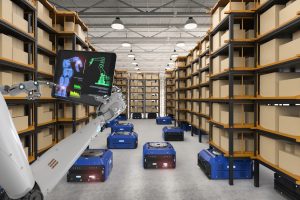Harry Stafford, Consultant at BoxLogic provides an overview of the manual bulk storage options as part of our automation series.
We start with manual solutions because, for many, these options are the base case of any warehouse design. Any payback from automation investment would be measured against manual storage and picking options.

Introduction to Manual Bulk Storage
With all the talk about the importance of automation in warehousing, it can be easy to lose sight of the fact that for many operations, manual is the optimal solution. Some warehouses just don’t have the required throughput to support a return on investment in automation. Low labour and space costs might limit the value created by automation or the product might be difficult to handle by robots, pushing users towards manual environments.
Manual racking and shelving come in many different formats and is constrained only by the height of the building, floor strength or capability of the reach trucks. Manual racking is applicable to all industries and sectors across all temperature regimes due to the international standardisation of pallets as a storage medium.
The appropriate manual storage option depends on a variety of factors including, size of product, number of SKUs to be accessed, depth of stock per SKU, speed of movement, and overall operational throughput. This post will outline each of the different bulk storage options and state where they are best used.
Block Stack Storage
Block stack operations require no racking or storage infrastructure. It stacks pallets on top of each other, typically in lanes of individual SKUs. Line marking of the storage lanes can be particularly useful to retain order in such circumstances, assuming stable demand and storage profiles.
Pallet loads must be stackable and strong as they can be stacked up to six loads high, depending on the pallet height, building clear height and pallet weight. Block stack storage is well suited to operations with a relatively low SKU quantity, deep pallet holdings, and low building clear height.
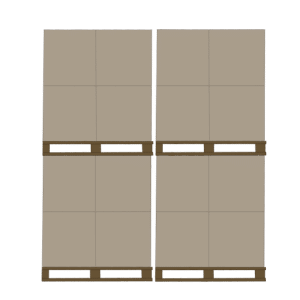
Adjustable Pallet Racking (APR)
The most common form of racking, APR or wide aisle racking is typically configured as pallets side-by-side in a single unit deep to be accessed in via an aisle of circa 3 metres, although this is defined by the products being handled (longer pallet loads require wider aisles) and the truck being used to putaway and pick each pallet. Reach trucks are typically used to putaway and retrieve loads in an APR environment, offering reach heights of up to 14 metres.
Adjustable Pallet Racking is also effective for case or unit picking operations with low (LLOP) to medium level order pick trucks (MLOP).
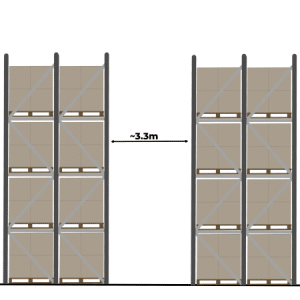
Double Deep Pallet Racking
Double deep racking is very similar to standard APR racking, but it provides greater storage density as each location can store two pallets in the depth. Pallets are only accessed from one side by specialist reach trucks. Reach trucks operate in aisle widths of circa 3 metres, depending on the load.
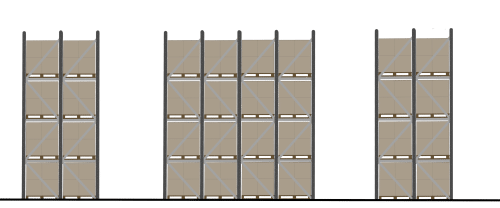
Very Narrow Aisle Racking (VNA)
Very Narrow Aisle racking looks like APR racking but benefits from narrower aisles, usually circa 2 metres in width but again, this depends on the truck manufacturer, pallet size and orientation, and racking height. Unlike most APR racking operations, every storage level can serve as a pickface as the picker can be bought to the height of the goods via a high-level order picker (HLOP) or VNA combi truck.
VNA racking store pallets or carton loads, where the racking depth is reduced. Only one truck can operate in an aisle at any given time, unlike wide aisle racking, limiting the throughput of each aisle. For safety reasons, pedestrians are usually not permitted into the aisles.
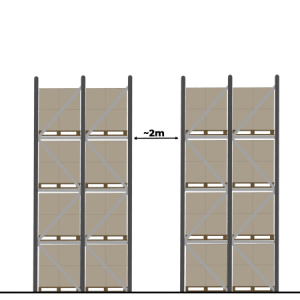
Mobile Pallet Racking
Mobile racking is a storage format where the entire structure moves to allow access to a single aisle at a time. This supports a much denser storage solution but has throughput restrictions, as the truck driver must wait for racking to move for each aisle, making this solution is appropriate for slow moving lines where footprint is limited.
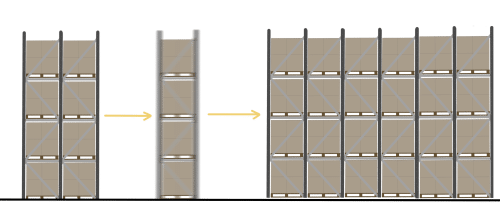
Drive In Racking
Drive in racking is a multi-deep pallet storage format and allows an FLT operator to retrieve or putaway pallets by literally driving into the racking. Drive in racking is only applicable for operations with super-deep pallet storage quantities however as it requires the same SKU to be stored in the depth and height of the racking. Drive in works to a Last-In-First-Out (LIFO) system and sacrifices accessibility for product density. Due to the lack of support, it also requires good quality pallet bases.
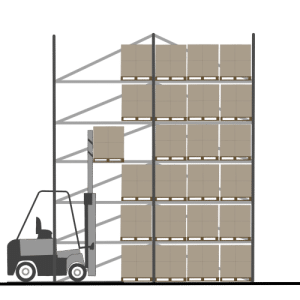
Push Back Racking
Push back racking is another multi-deep pallet storage format. The multi-deep racking is angled so that pallets naturally present at the front of the racking via gravity rollers or carts. Pallets can be stored up to 4-6 deep depending on the weight of the pallet load. Push back racking works well for operations that can operate a LIFO system and has a medium stock depth.
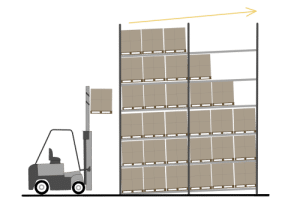
Dynamic Racking
Dynamic racking is another multi-deep pallet storage medium. The racking is angled with pallets fed in at one end so that they flow down via gravity rollers to the outfeed where they can be accessed via forklift trucks. Dynamic racking uses a FIFO (First-In-First-Out) rotation system and improves safety as it separates infeed and outfeed traffic.
It should be used on operations with medium to high stock depths requiring FIFO stock rotation, usually perishable products, with relatively high throughputs. It can also be used to support despatch operations where pallets might be marshalled for long period and support fast extraction times. Good quality pallets are required to move reliably down the rollers.
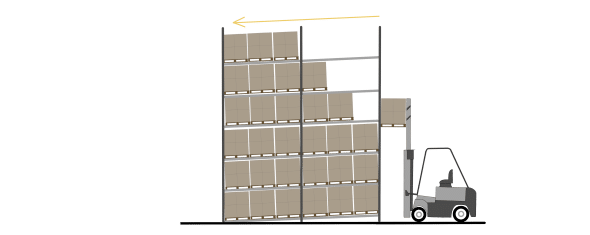
Radio Shuttle
Radio shuttles racking is another multi-deep pallet storage medium. Unlike other formats, it uses a radio controlled ‘Shuttle’ rather than gravity to move pallets. These radio-controlled shuttles work with a forklift driver to perform putaway and retrieval functions. The forklift driver must move the shuttle between each storage location. Radio shuttle racking is well suited to operations with high storage depths, low throughput and is flexible enough to operate either FIFO or LIFO.
Cantilever Racking
Cantilever racking allows for storage of products that are not easily stored on pallets. Racking uprights support cantilevered arms where the products are placed. Long items are stored across multiple arms and the arm lengths can vary according to the depth of the load. It is well suited to the storage of piping and timber.
As you can now see, there are a wide variety of manual bulk storage options and the right solution for any operation will depend on the individual characteristics of each operation.
Many warehouses may contain multiple types of racking. For example, VNA might be used for bulk storage with APR (Wide Aisle) used as a case or unit pickface. Other warehouses might use APR racking for most SKUs but also deploy an amount of multi-deep racking (dynamic or push back) to save space on the fast moving or high-volume SKUs.
If you need advice on the right storage type or combination of storage types, then get in touch with our warehouse consultants to find out how we can help you design a dense and efficient operation in your distribution facility.


